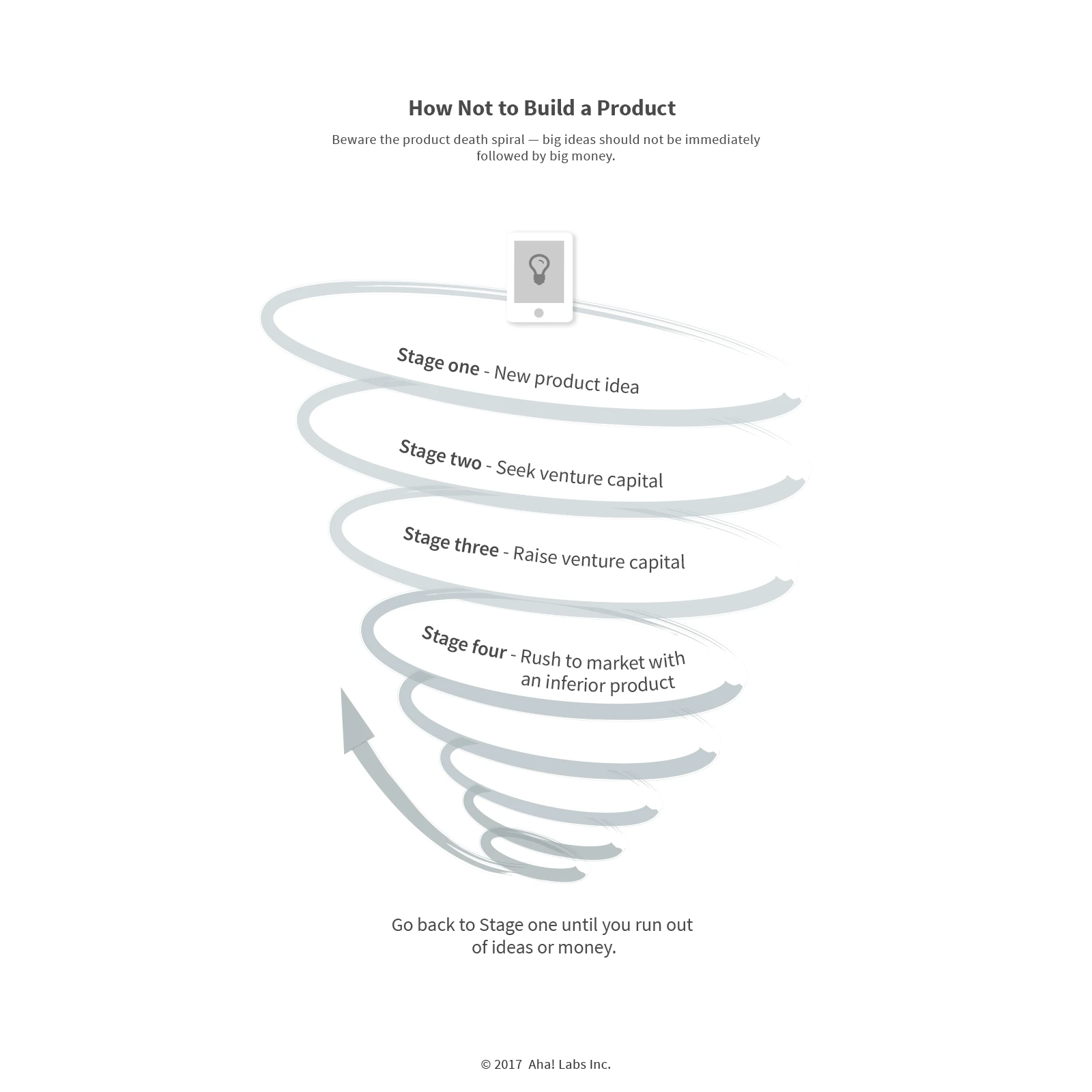
How Product Managers Should Not Build a Product
You want to build something great. We all do. And we hope that customers will love our products as much as we do. But too many people cut corners simply because it takes hard work to earn that desired love. And when the shortcuts lead to a focus on product hype and bolstering company valuation rather than serving adoring customers, it can spell big trouble.
This is not only a problem for startups. Even well-established businesses can get caught in common growth-at-all-cost and hype traps when building something new.
I write about these pitfalls in my new book for product managers and company builders, Lovability. It is now widely available for sale at bookstores and online. And I am humbled to report that it is an Amazon #1 bestseller already.
Here is an exclusive excerpt for readers of our blog, explaining why so many people wind up somewhere they never intended — and how to steer clear of what I call the “product death spiral.”
—The following is an excerpt from Lovability—

We all set out to build something remarkable that will create value, help a lot of people become prosperous, and perhaps change a small part of the world. Unfortunately, even though we might start with the best of intentions, the prevailing “get big unnaturally fast” mentality leads too many talented and well-meaning people to fall into these traps.
The journey to the edge of the traps and to a painful fall is often down a path with four stages:
Stage one You have an idea and have some experience in the market you are about to enter. You are either an engineer or you team up with one to build a prototype. You put together Microsoft PowerPoint presentations and set out to raise seed capital.
Stage two Because you know someone, or your idea seems compelling on paper, you secure a few meetings with venture capitalists (VCs) or get invited to participate in a startup “demo day.” Maybe some early customer traction helps validate your claim, and — wonder of wonders — there is interest in your idea.
Now you are caught. Meaningful investors want to fund businesses that can generate $100 million in revenue in five to seven years. How on earth are you going to make that happen? However, you are so close to funding your dream that you start bending the truth and exaggerating what is likely or even possible.
Stage three You begin building market size models. In order to make the case that growing to $100 million is a possibility, those models need to get big fast. You find a few friendly customers to acknowledge that you are onto something and a few early adopters to commit to buying the first version of your product. You build marketing plans and customer acquisition models, and someone says, “We’ll fund it.” You start to scale your team now that you are flush with cash, but from Day One you have a cloud over your head: The pressure of what you have promised.
Stage four Desperation provokes compromise and bad behavior. You rush to market because you are told that you can iterate and even pivot if you need to. You try to add customers at any cost. This breeds internal strain when it proves to be harder than anyone thought. With investors looking over your shoulder, you do not have the time to build a superlative product, so you manage perceptions instead. Cash starts to dry up. Pressure mounts. You must show traction or you will not be able to raise more money — or if you do, it will not be at the valuation you expect.
These are symptoms of “Jenga Syndrome” (inspired by the scene from The Big Short where Ryan Gosling uses Jenga blocks to explain the fragility of the credit default swaps market). The upper blocks are the market size, your revenue projections, and valuation — the things everybody gets excited about. But no matter how high you stack them, if you do not have a meaningful product and a rock-solid foundation of customer value at the base, the entire stack will inevitably crash.
♡♡♡
This is my experience of what happens when things start to swirl. It is not every failed company’s story, but I have seen it too many times to avoid warning you how not to build a product.
Get your copy of Lovability now!
What other big mistakes do product managers make when building products?
Aha! is a trademark of Aha! Labs Inc. All other company and product names may be trademarks of the respective companies with which they are associated.




